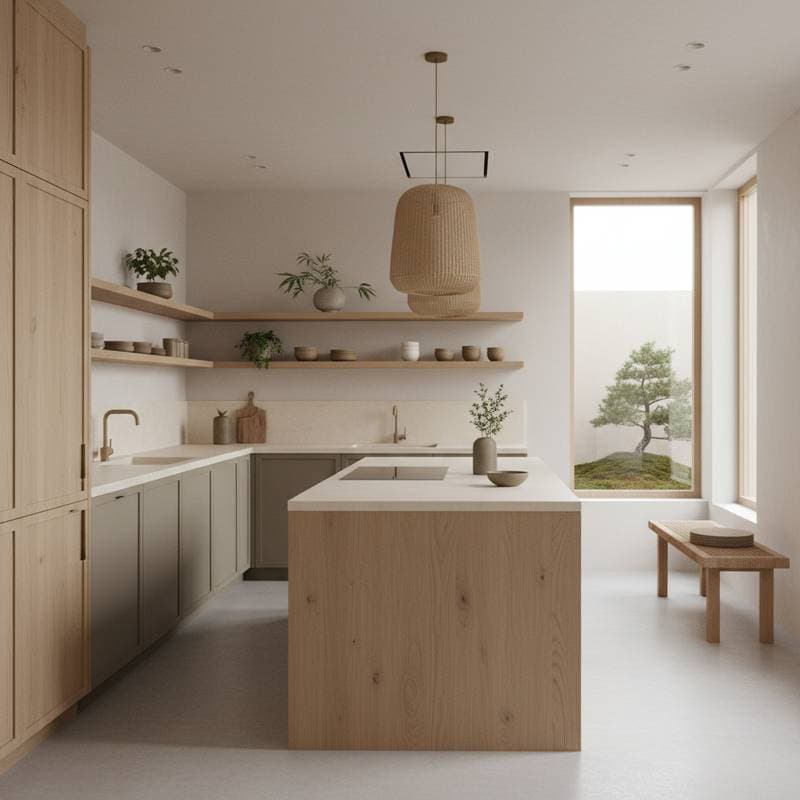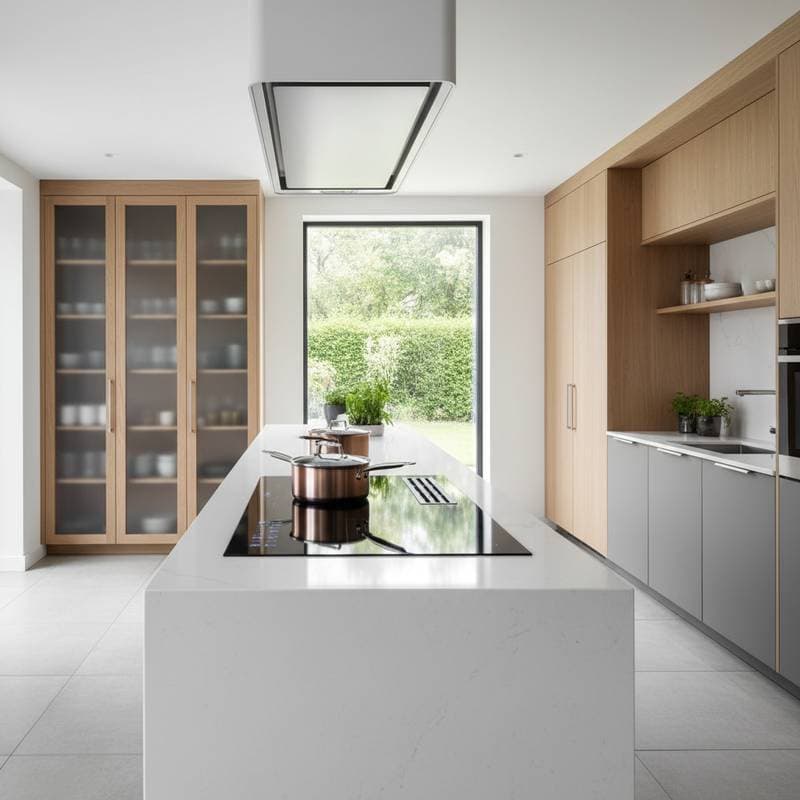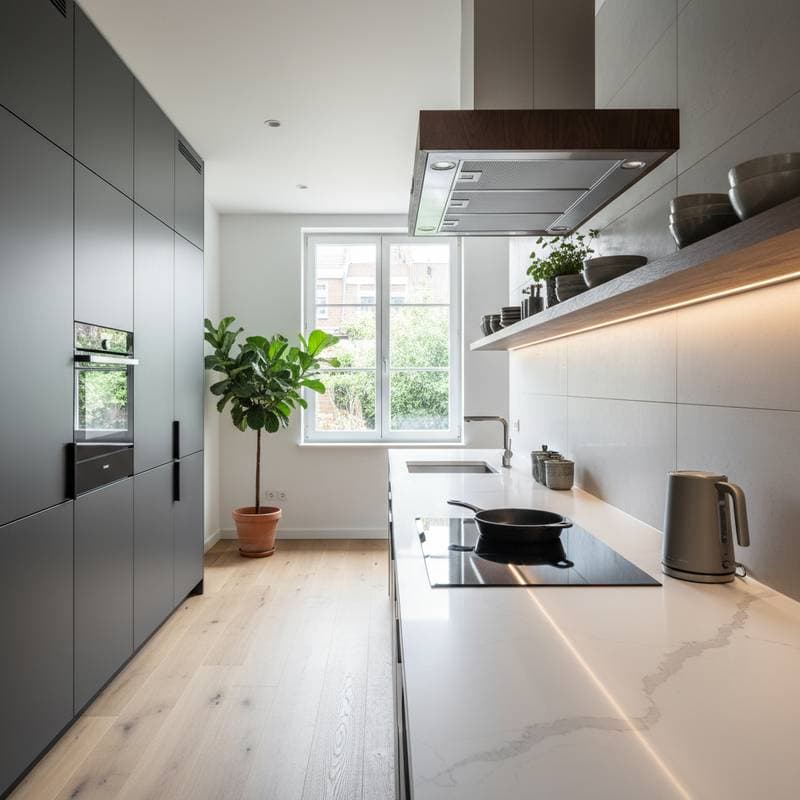Induction Cooktops: The Superior Shift from Gas Stoves
A subtle transformation unfolds in contemporary kitchens. The familiar hiss of gas flames once anchored cooking rituals, but induction technology now introduces precision, efficiency, and refined control. As regulations curb gas use in various regions, this change transcends mere adaptation. Induction cooktops offer sleek integration and smart performance, aligning with evolving priorities in design and lifestyle.
Understanding the Transition from Flame to Magnetic Field
Blue flames long represented kitchen warmth and skill. Growing concerns over air quality, safety, and energy use now challenge that tradition. Induction cooking employs a magnetic field to heat cookware directly, bypassing flames or coils. This method delivers instant precision, quicker adjustments, and a cooler ambient space.
Such innovation expands design options. Without gas lines or robust exhaust needs, installers position cooktops flexibly. In open layouts, induction maintains clean visuals and unobstructed views. Interior designer Sophie Marcell of Studio Marcell Interiors notes, “Induction has changed how we think about the kitchen island. It becomes more than just a workspace. It is a social hub, uninterrupted by bulky appliances or overhead hoods.”
The Distinct Sensation of Induction Cooking
Induction cooking resembles a deliberate dance. The cooktop stays cool beneath pots, concentrating heat where needed. Without open flames, actions gain clarity and intent. The subtle hum of the field supplants gas crackles, fostering focused calm.
Initial users may note the shift from gas drama. However, induction provides unmatched responsiveness akin to high-end professional equipment. Heat changes happen in moments. Users melt chocolate evenly, boil water swiftly, or sear proteins with accuracy. Independent zones enable simultaneous dish management, building culinary assurance through exact oversight.
Seamless Design and Spatial Harmony
Induction invites minimalist aesthetics. Flush glass-ceramic tops in matte or glossy finishes blend into counters. Inactive, they extend surface continuity. Brands such as BORA, Gaggenau, and Miele achieve near-invisible profiles, turning cooktops into versatile planes.
This low-profile design frees architectural choices. Kitchens merge fluidly with living areas, free from combustion barriers. Surfaces in Carrara marble, leathered granite, or European oak flow uninterrupted. Designers pair these with cabinet finishes like Farrow & Ball’s “Railings” or Benjamin Moore’s “Graphite” to balance matte textures and glossy reflections.
Kitchen maker Bulthaup embeds induction into solid islands of aluminum or walnut. Product designer Lucas Fehr of Fehr Design Studio explains, “Induction lets us treat the cooking surface as part of the architecture. It gives us a freedom that gas never allowed.”
Superior Efficiency and Eco-Conscious Performance
Induction excels in energy use. Nearly all power targets the cookware, minimizing waste unlike gas or coil systems. Kitchens remain cooler, easing cooling demands and enhancing comfort. In dense urban settings or small residences, this efficiency proves essential.
Air purity stands out equally. Gas releases pollutants like nitrogen dioxide and carbon monoxide, even with vents. Induction produces none, advancing health and sustainability. Local policies limiting gas promote these benefits, prompting homeowners to adopt induction as a logical progression.
Mastering Precision in Daily Use
Induction precision engages the senses. Touch interfaces or sliders enable intuitive adjustments. Advanced models sense pot size and placement, engaging only required areas. This direct interaction appeals to chefs and enthusiasts alike.
Chef Amira Kwan of Atelier Kwan shares, “At first, I missed the drama of flame. But now I realize induction gives me more control. I can hold a sauce at the exact temperature I want, with no guessing. It feels like the kitchen listens to me.” Such synergy blends human skill with tech reliability.
Enhancing Aesthetics Through Material Choices
Induction's clean lines open material explorations. Free from burner clutter, subtle colors and textures emerge. Pair gray quartzite counters with fluted oak for a blend of nature and innovation, grounded by the smooth top.
Integrated vents like BORA Pure or Elica NikolaTesla eliminate overhead units, preserving height and openness. Lower pendants then illuminate islands warmly, linking cooking to social moments. In compact spaces, this efficiency adds a sense of luxury, elevating utility to artistry.
Integrating Tradition with Modern Tools
Induction requires minor adaptations, such as magnetic cookware. This often prompts upgrades to pieces from Le Creuset, Demeyere, or All-Clad, designed for even heat spread and durability.
Traditions endure and improve. Stable temperatures ensure recipe consistency in tasks like tempering or simmering. Technology supports rather than supplants intuitive methods, yielding reliable outcomes.
Cultural Evolution of Kitchen Spaces
This shift reimagines the kitchen beyond function. It serves as a social core and expressive focal point. Sustainability integrates into design principles, with induction embodying efficiency and restraint.
Architectural historian Maya Duvall terms it “a move from performance to presence.” The space reflects values through cohesive materials and tech, prioritizing calm over spectacle.
Innovations Shaping Tomorrow's Surfaces
Advancements push induction boundaries. Flexible zones adapt to varied cookware, while connected features guide recipes and monitor heat. These tools make cooking more instinctive.
Designers envision surfaces doubling as prep and dining areas. A multifunctional island could handle cooking, serving, and eating seamlessly, evolving kitchens into dynamic forms.
Embracing Induction for Everyday Benefits
Adopting induction reshapes habits and ambiance. Cool surfaces enhance safety for family involvement. Effortless cleaning preserves order, with spills vanishing quickly.
The serene setup promotes mindful routines. Energy savings align with eco and budget goals, fostering a space of intentional creation over mechanical toil.
Customizing Your Induction Setup
Tailor induction kitchens to personal style. Opt for basalt or concrete islands where tops vanish, or accent with brass edges and veined quartz. Deep slate cabinets amplify modernity; light oak adds warmth.
Incorporate tactile elements like leather pulls, ceramic tiles, or fabric stools to balance tech crispness. This harmony crafts inviting, innovative environments.
Steps to Transition Successfully
Start with power and ventilation assessments for your layout. Select compatible cookware to maximize efficiency. View the switch as enhancement, not sacrifice.
Induction delivers quiet power and smart design, yielding kitchens that inspire sustainable, joyful cooking.









